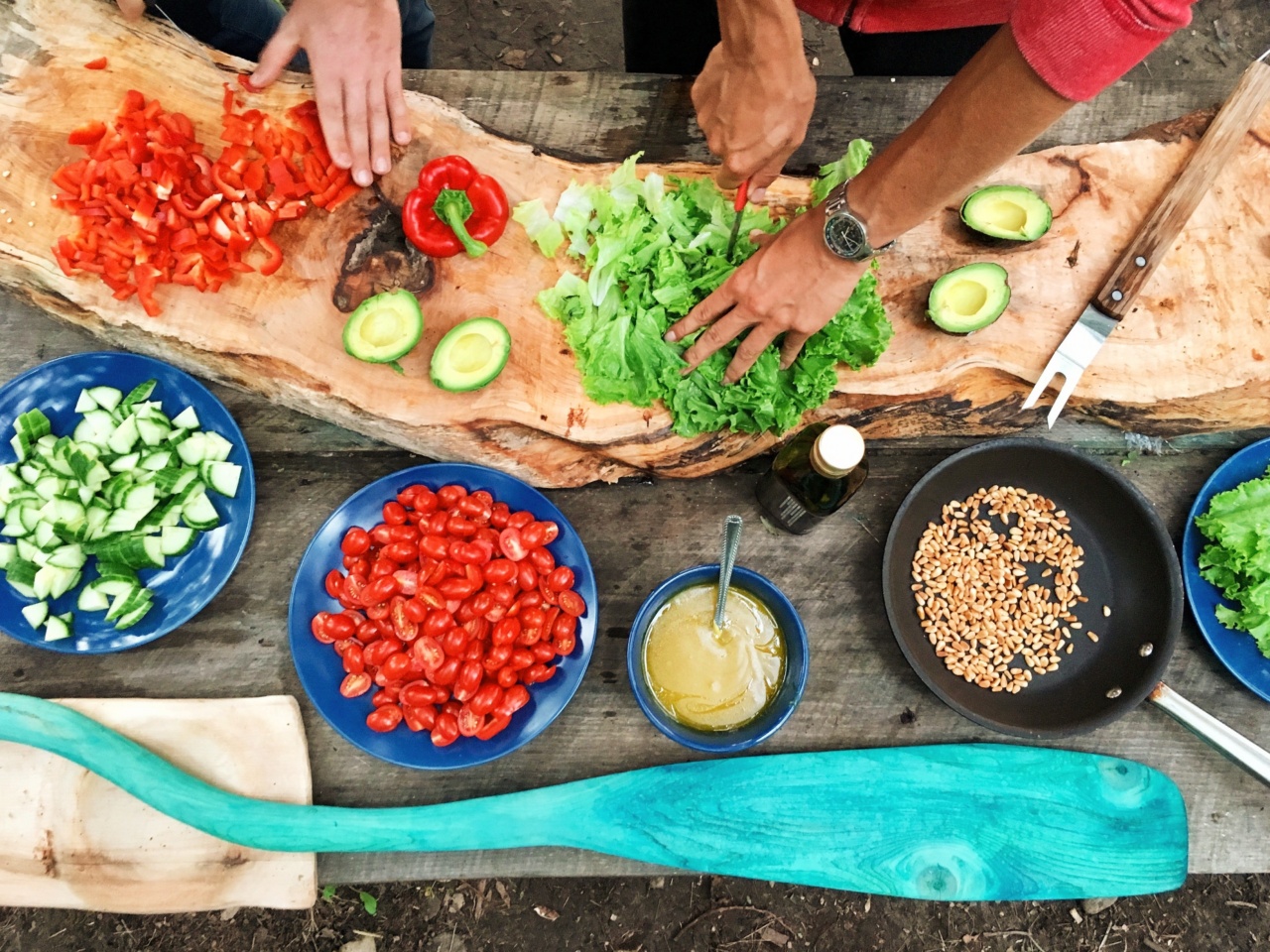Cooking for a person with Parkinson’s disease can be challenging, but it can also be a source of joy and creativity.
Parkinson’s disease affects the central nervous system, which can cause difficulties with movement, balance, and coordination. It also affects the digestive system, which can lead to a loss of appetite, constipation, and difficulty swallowing. Therefore, it is essential to prepare foods that are easy to chew, swallow, and digest while also being flavorful and nutritious.
Tip 1: Plan ahead
The first step in cooking for Parkinson’s patients is to plan ahead. Create a weekly menu and consider the patient’s preferences, dietary restrictions, and medications.
Plan several small meals throughout the day instead of three large meals to ease digestion and prevent constipation.
Tip 2: Use small plates and utensils
Using small plates and utensils can make it easier for Parkinson’s patients to eat and prevent spills. Use lightweight utensils with easy-to-grip handles.
You can also use adaptive devices like plate guards or weighted utensils to make eating easier.
Tip 3: Cut food into small pieces
It is essential to cut food into small pieces to make it easier to chew and swallow. Use a food processor or a chopper to reduce food into bite-sized pieces, and avoid foods that require a lot of chewing.
Tip 4: Add flavor with herbs and spices
Since Parkinson’s patients may have a decreased sense of taste or sense of smell, adding herbs and spices can enhance the flavor of food. Experiment with different seasoning blends and herbs like thyme, rosemary, basil, and oregano.
Tip 5: Avoid high-fat and high-sugar foods
Foods high in fat or sugar can lead to constipation and may interfere with medication absorption. Therefore, it is essential to avoid high-fat or high-sugar foods while also retaining the flavor and texture of food.
Tip 6: Use lean protein sources
Incorporate lean protein sources like chicken, fish, turkey, eggs, and legumes to ensure that Parkinson’s patients are obtaining adequate protein. It is also essential to choose protein sources that are easier to chew and swallow.
Tip 7: Use sauces and gravies
Sauces and gravies can help moisten food, making it easier to chew and swallow. Choose gravies and sauces that are low in fat and sodium.
Tip 8: Make soups and broths
Soups and broths are a great way to hydrate and provide nutrients to Parkinson’s patients. They can also be an excellent option for patients who have difficulty chewing or swallowing.
Choose soups and broths that are easy to digest and low in sodium.
Tip 9: Use colorful fruits and vegetables
Colorful fruits and vegetables are packed with nutrients that can benefit Parkinson’s patients. Incorporate a variety of fruits and vegetables into meals to ensure that the patient is receiving adequate vitamins and minerals.
Tip 10: Avoid foods that are difficult to swallow or chew
Avoid foods that are difficult to swallow or chew, like tough meats or stringy vegetables. Instead, opt for foods that are easy to cut and chew, like cooked vegetables and tender meats.
Tip 11: Keep meals simple
Keep meals simple and limit the number of ingredients to make it easier for Parkinson’s patients to eat. Avoid complex recipes that require a lot of preparation or long cooking times.
Tip 12: Use a slow cooker or pressure cooker
A slow cooker or pressure cooker can be a great tool for cooking for Parkinson’s patients. They are both convenient and can help make meals more tender and easy to chew.
Tip 13: Encourage water intake
Since Parkinson’s patients may have difficulty swallowing, it is essential to encourage water intake to prevent dehydration. Offer water with meals and snacks and consider incorporating hydrating foods like watermelon or cucumber.
Tip 14: Incorporate fiber-rich foods
Fiber-rich foods can help prevent constipation, a common symptom of Parkinson’s disease. Incorporate foods like whole grains, fruits, and vegetables to help maintain digestive health.
Tip 15: Offer small, frequent meals
Offering small, frequent meals throughout the day can help Parkinson’s patients maintain their energy levels and prevent nausea and vomiting.
Tip 16: Avoid caffeine close to bedtime
Caffeine can interfere with sleep, which can worsen Parkinson’s symptoms. Avoid offering caffeine-containing beverages close to bedtime.
Tip 17: Limit sodium
Limiting sodium intake can help prevent fluid retention, which can exacerbate Parkinson’s symptoms. Choose low-sodium ingredients and avoid adding salt to dishes.
Tip 18: Offer protein-rich snacks
Offer protein-rich snacks like nuts, seeds, and nut butter to help Parkinson’s patients maintain their energy levels throughout the day.
Tip 19: Serve meals at a consistent temperature
Fluctuations in temperature can affect Parkinson’s symptoms, so it is essential to serve meals at a consistent temperature.
Tip 20: Consider medication schedules
Take into account the timing of medication when planning meals. Certain medications may need to be taken with or without food, so it is important to coordinate meals with medication schedules.
Tip 21: Avoid large portion sizes
Avoid offering large portion sizes to Parkinson’s patients, as it may lead to discomfort and difficulties with digestion. Offer smaller plates with appropriate portion sizes that the patient can manage.
Tip 22: Choose foods that are easy to prepare
Choose foods that are easy to prepare to minimize cooking time and make mealtimes less stressful.
Tip 23: Involve the Parkinson’s patient in meal planning
Involve the Parkinson’s patient in meal planning to ensure that their preferences and dietary restrictions are taken into account.
Tip 24: Offer a variety of textures
Offer a variety of textures in meals to make food more interesting and stimulate the patient’s appetite. Offer soft and crunchy foods, hot and cold, and sweet and savory.
Tip 25: Keep a food diary
Keeping a food diary can help track the patient’s food intake, identify food triggers, and ensure that the patient is receiving adequate nutrition.
Tip 26: Use meal delivery services
Meal delivery services can be helpful for Parkinson’s patients who have difficulty grocery shopping or cooking. Look for services that offer nutrient-dense meals that cater to dietary restrictions and preferences.
Tip 27: Offer natural laxatives
Constipation is a common symptom of Parkinson’s disease, so it is important to offer natural laxatives like prunes, figs, and psyllium to help ease digestion.
Tip 28: Promote a calm eating environment
Feeling stressed or anxious can worsen Parkinson’s symptoms, so it is important to promote a calm and relaxing eating environment.
Tip 29: Keep snacks on hand
Keep healthy snacks like fresh fruit, yogurt, and cheese on hand to avoid reaching for unhealthy snack options in between meals.
Tip 30: Seek help if needed
Seek help from a dietitian or a medical professional if you are having difficulty meeting the patient’s dietary needs or are unsure of what foods to offer.






























